Cortana has come a long way from being deeply integrated into the system to now a standalone app in Windows 10. It has been hated and loved for many things, but it’s staying in the way or the other. In this post, we will share Cortana features, trips, and tricks in Windows 10 v2004 and later.
Cortana Features, Tips and Tricks in Windows 10
Microsoft has slimmed down Cortana, and it’s mostly about skills. Here is the list of features, and how you can use Cortana in Windows 10.
- Standalone App
- Change Microsoft Account
- Email Integration
- Calendar Integration
- Windows apps and settings
- Add Tasks and Suggested Tasks
- Cortana Settings
Do note that the features will be continuously added to Cortana, and could also be removed. While we will make sure to keep the list as fresh as possible, if you find anything, add to the comments.
1] Standalone app
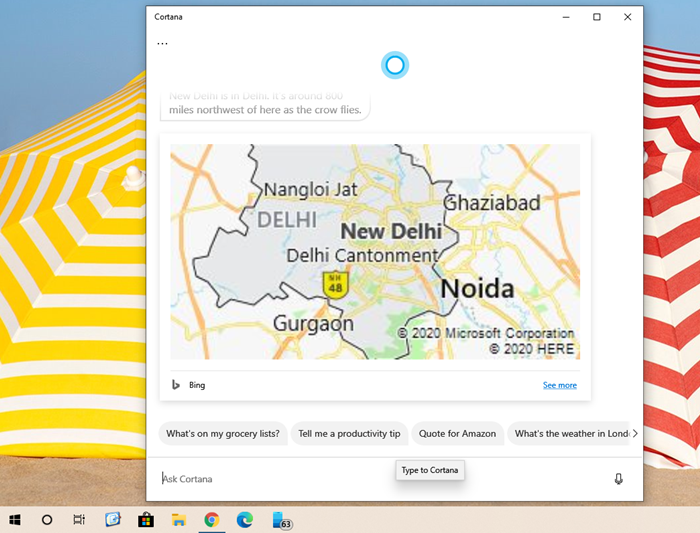
Microsoft has finally decided to let Cortana be a standalone app instead of tied to Windows Search, and doing all background jobs. While it is still integrated within its services, you can choose not to use it if you don’t want it.
That said, Cortana has lost a lot of features as well compared to its previous version. They may come back eventually, but it’s going to be different. The app now offers a floating window that can be resized, cannot be disabled, but can stay hidden, and still be invoked using wake-word or keyboard shortcuts.
2] Change Microsoft Account
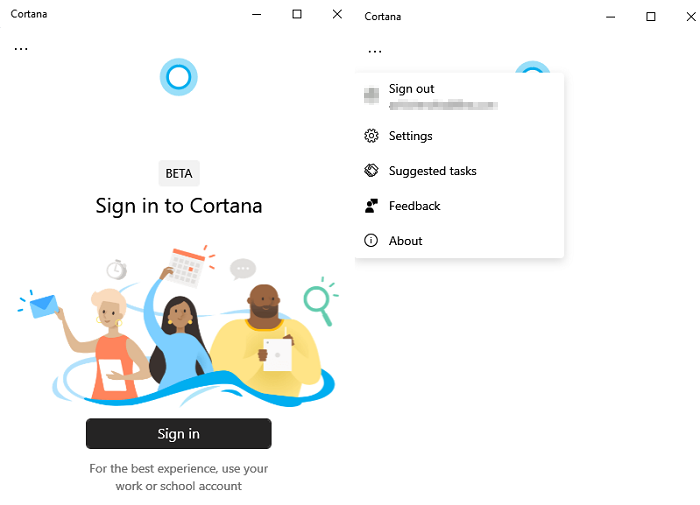
You can now use any Microsoft account with Cortana and not the one which is associated with your user account. It gives users the freedom to use a school account while you may be using a personal account on Windows 10 computer.
- If you haven’t signed in, you can Open Cortana, and sign-in using any account.
- If you accidentally signed in using the same account, then Open Cortana, and then click on the three-dot menu.
- Choose to sign-out, and then sign-in again.
- The account will be added to your Account list so you can use it again if you switch.
3] Send and Check Emails
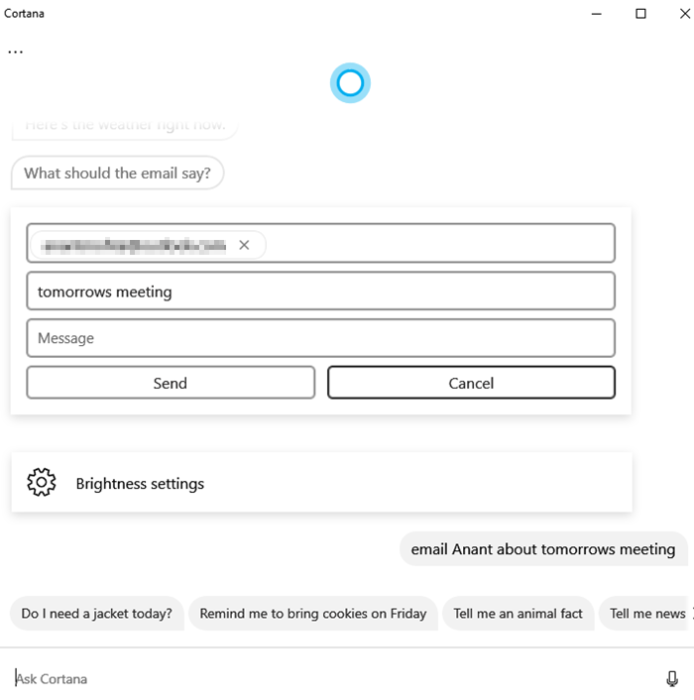
Cortana has skills that are strongly integrated within Windows, and Microsoft 365 products like Outlook, Word, and other products, but you cannot search for files anymore.
Talking about email integration, you can send an email, find emails, and even ask Cortana to play all recent emails. If you say play email, then it will show notification of all the latest emails in the action center. Here is the list of email commands
- Send email to <email id> <content>
- Show me emails from <name>
- Play Emails
4] Calendar, Meetings, and Teams
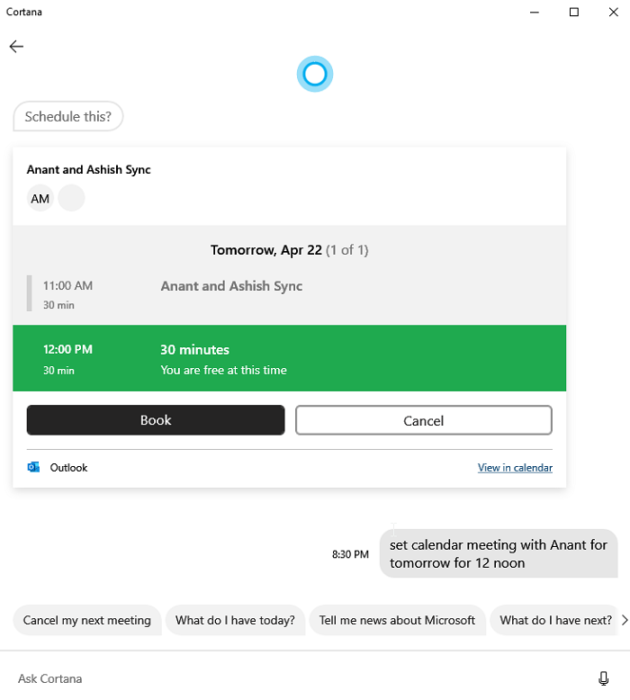
As you can see, Cortana is more about Microsoft products and Windows than anything else. Separated from Windows Search, the app can be used to make it useful for skills that can get the job done. Just like emails, Cortana can also talk to Calendar.
- Create new meetings
- Query and cancel meetings
- Join Microsoft Teams meeting
5] Open Windows Settings
You can use Cortana to open Windows settings faster than you would search or using the mouse. The same applies to applications as well.
While you can always say open network settings, but it can be contextual as well. If you say “I have a problem with network settings,” it will open Windows 10 network settings. When it comes to apps, it is different. You need to be precise. If you want to open Telegram Messenger, you need to say the full name. In the case of similar apps, you will have the option to choose.
6] Create Tasks & Suggested Tasks
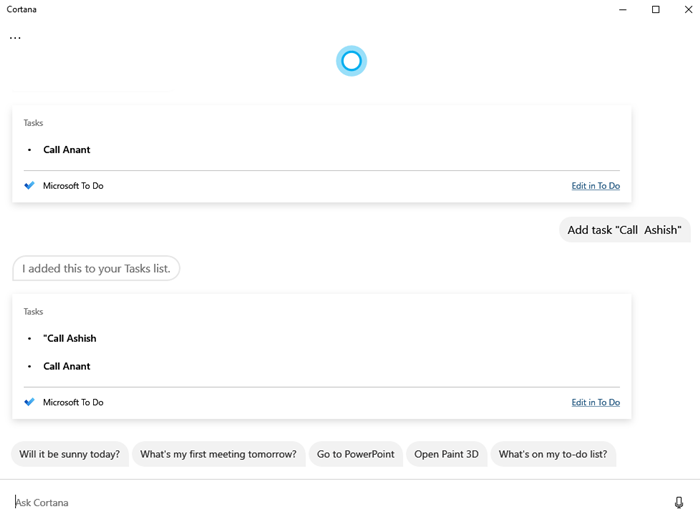
You can use Cortana to create tasks that are added to Microsoft’s ToDo, and along with this, Suggested Tasks are picked up using AI from Outlook, Microsoft products, and Calendar. These are under Suggested Task, which appears under the Cortana menu. This setting may or may not appear all the time, which is happening with me as of now.
To add a task, all you need to is ask Cortana to create a task with a name, and it will add it. You can then access it from the official website.
7] App Settings
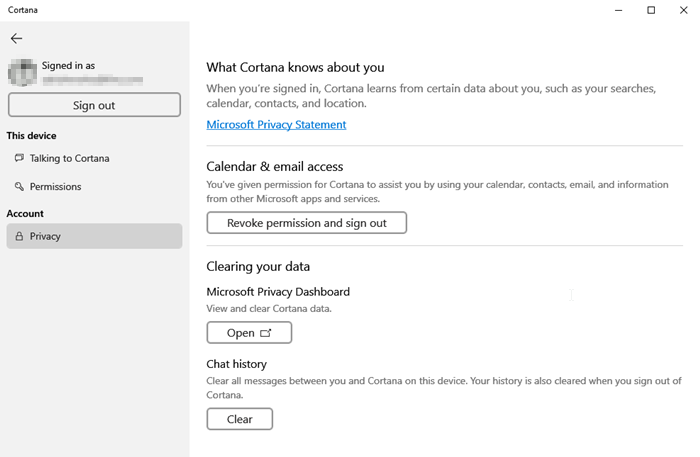
Cortana offers complete control on how you can manage Privacy, recent search history, and the option to delete it from Microsoft Privacy Dashboard.
- Open Cortana, and then click on the menu.
- Under Privacy, you have the option to clear history, access to the privacy dashboard, and an option to unlink the account.
Apart from this, there are only a few settings available:
- Toggle Wake word
- Preferred input mode when invoked using Win + C
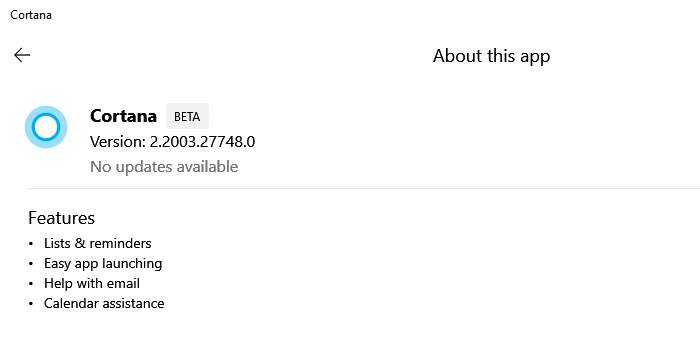
You can also check the list of features available with Cortana by clicking on the menu, and then selecting About. The same section checks for any new version, and updates automatically when needed.
I hope the post on the Cortana feature, tips, and tricks on Windows 10 comes in handy after you updated to the recent version of Windows 10.